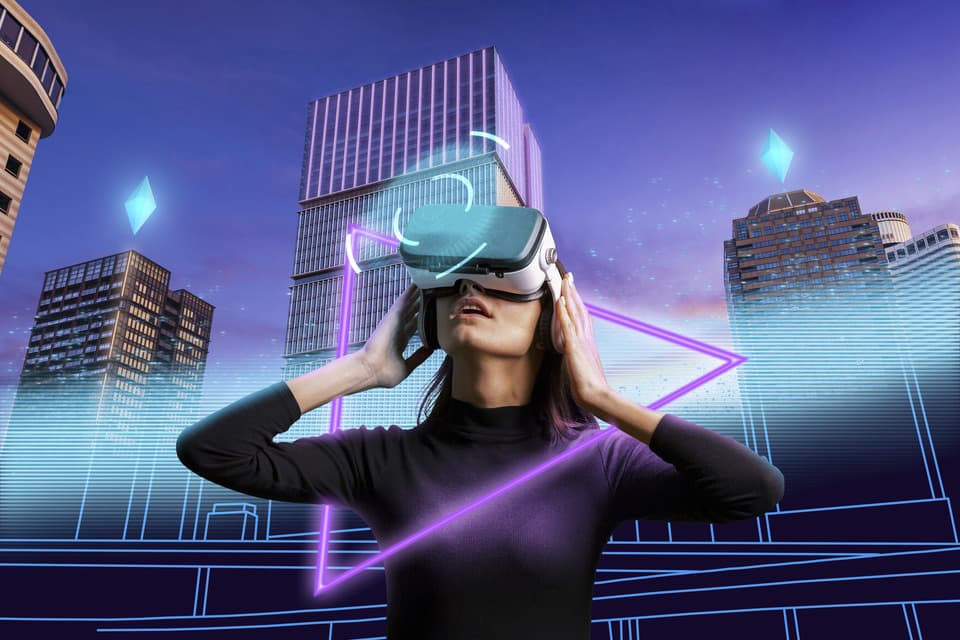The Role of Blockchain Technology in AR and VR
4 min read
Blockchain technology and Augmented Reality (AR) and Virtual Reality (VR) are two innovative technologies that have garnered significant attention in recent years. While AR and VR focus on creating immersive experiences and transforming how we interact with digital content, blockchain technology offers a decentralized and secure way to manage data and transactions. Together, these technologies have the potential to revolutionize several industries by enhancing security, transparency, and interoperability. This blog explores the intersection of blockchain technology with AR and VR, examining the opportunities, challenges, and future possibilities.
Understanding Blockchain Technology
Blockchain is a decentralized and distributed ledger technology that enables secure and transparent record-keeping of transactions across a network of computers. Each transaction is recorded in a “block,” which is linked to previous blocks, forming a chain of blocks—hence the term blockchain. This technology is best known for underpinning cryptocurrencies like Bitcoin, but its applications extend far beyond digital currencies.
Key features of blockchain technology include:
- Decentralization: No single entity has control over the blockchain network, making it resistant to tampering and censorship.
- Transparency: All transactions recorded on the blockchain are transparent and visible to all participants, enhancing trust and accountability.
- Security: Cryptographic techniques ensure that data stored on the blockchain is secure and tamper-proof.
- Immutability: Once a transaction is recorded on the blockchain, it cannot be altered or deleted, ensuring data integrity.
Blockchain in Augmented Reality (AR) and Virtual Reality (VR)
- Digital Asset Ownership and Authenticity
Blockchain technology can address the issue of digital asset ownership and authenticity in AR and VR environments. In virtual worlds or augmented reality experiences, users can own digital assets such as virtual land, digital collectibles (NFTs), or virtual goods. Blockchain allows for the creation of unique, verifiable digital assets with clear ownership records stored on the blockchain. This ensures that users have true ownership of their virtual assets and can transfer them securely across different platforms or environments.
- Micropayments and Content Monetization
Blockchain enables seamless micropayments and decentralized payment mechanisms within AR and VR applications. Content creators, developers, and users can participate in a decentralized economy where transactions are executed directly between parties without intermediaries. This opens up new opportunities for content monetization, such as pay-per-use models for VR experiences, virtual goods trading, or incentivizing user engagement through token rewards.
- Enhanced Security and Privacy
Security and privacy are critical concerns in AR and VR applications, especially when dealing with sensitive user data or transactions. Blockchain’s cryptographic protocols and decentralized nature provide enhanced security against data breaches and unauthorized access. Users can have greater control over their personal information and digital identities, reducing the risks associated with centralized data storage.
- Interoperability and Cross-Platform Integration
Blockchain technology facilitates interoperability and seamless integration across different AR and VR platforms and ecosystems. Smart contracts, self-executing contracts with predefined rules and conditions, can automate transactions and interactions between different parties in AR and VR environments. This interoperability enables cross-platform asset transfers, collaboration between developers, and the creation of interconnected virtual worlds.
Challenges and Considerations
While the integration of blockchain technology with AR and VR presents exciting opportunities, several challenges must be addressed:
- Scalability: Blockchain networks, such as Ethereum, face scalability issues that can limit transaction throughput and increase costs. Scalability solutions, such as layer 2 protocols and blockchain sharding, are being developed to address these issues.
- User Experience: The complexity of blockchain technology and the need for wallet management can create barriers for mainstream adoption in AR and VR applications. User-friendly interfaces and education about blockchain technology are essential to improving user experience.
- Regulatory Environment: Regulatory frameworks for blockchain technology and digital assets vary globally. Clarifying regulations and compliance requirements will be crucial for the widespread adoption of blockchain in AR and VR.
Future Outlook
Looking ahead, the synergy between blockchain technology, AR, and VR is expected to drive innovation across various industries:
- Gaming and Entertainment: Blockchain-powered virtual economies, NFT-based digital collectibles, and decentralized gaming platforms are already gaining traction.
- Education and Training: Enhanced certification verification, virtual classrooms with tokenized incentives, and immersive training simulations.
- Healthcare: Secure storage and sharing of medical records, telemedicine platforms with enhanced privacy, and VR-based therapy sessions.
Conclusion
In conclusion, blockchain technology has the potential to enhance the functionality, security, and interoperability of AR and VR applications, unlocking new opportunities for innovation and user engagement. By addressing challenges such as scalability and user experience, stakeholders in the AR, VR, and blockchain ecosystems can collaborate to create robust, decentralized solutions that transform industries and redefine digital experiences. As these technologies continue to evolve, their integration is poised to shape the future of how we interact with virtual worlds, digital assets, and decentralized economies. Embracing this intersection promises a future where immersive experiences are not only captivating but also secure, transparent, and accessible to all.



